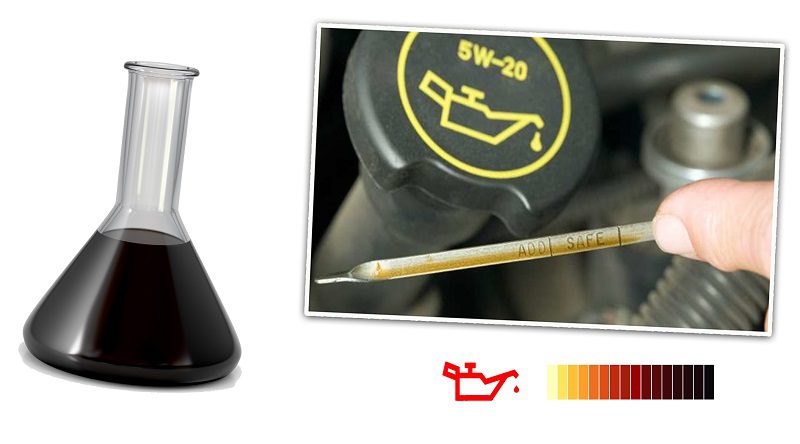
Does the dark color of the engine oil indicate its use?
Content
Soon after changing, the engine oil in your car turns pitch black again? Don't worry, this shouldn't be a malfunction! In today's post, we'll explain why your engine oil is turning dark and how to tell if it needs to be replaced.
What will you learn from this post?
- Does a dark color of engine oil always mean that it needs to be replaced?
- Why does engine oil turn black?
- How do you know if an engine oil is suitable for replacement?
Shortly speaking
Engine oil darkening is usually a natural process. Especially in cars with diesel engines - during the operation of diesel units, a large amount of soot is formed, which enters the crankcase and turns the lubricant black. It is not possible to determine whether the engine oil is used up by its color - in this regard, you should only follow the change intervals recommended by the car manufacturer.
Why does engine oil darken?
Engine oil is a consumable - this means that it wears out during normal operation of the car. Loses its properties over time - its viscosity and basicity change, dispersant, antifoam and extreme pressure additives are depleted, the tensile strength of the oil film decreases.
However, the tasks of an engine oil are not limited to just lubricating the engine. They also include the removal of heat from all of its components and cleaning them from impuritiesespecially due to soot, which is especially dangerous for the drive. Where do the particles in the engine come from?
Carbon black is produced by inaccurate combustion of air / fuel mixtures. Most of it is emitted through the exhaust gases along with the exhaust gases, but most of it enters the crankcase through leaks between the piston rings. There it is mixed with engine oil to make it. it is under his influence that he changes his color from amber-gold to black... The dispersants contained in it trap the soot particles, dissolve them and keep them in a liquid state until the next lubricant change.

Is heavy oil a good oil?
It happens that fresh engine oil turns black after a few kilometers. It happens, when replacing old grease is not completely drained - the largest contaminants always collect at the bottom of the oil pan, so even a small amount is enough to color the new grease.
Darkening of engine oil also occurs faster in diesel vehicles. Diesel drives emit significantly more particulate matter than gasoline drives. For this reason, more dispersants are added to synthetic oils specially formulated for diesel engines. If this grease becomes discolored shortly after changing it, it means performs well its cleansing functions and effectively neutralizes the effect of soot.
In cars equipped with gas installations, the problem of darkening of the oil practically does not arise. When propane-butane, which forms their fuel, burns, a minimum amount of soot is formed, so the grease does not change its color throughout its entire service life. However, this does not mean that it does not wear out. - on the contrary, it loses its properties faster than the lubricant in a gasoline-powered unit. When burning gas, a huge one goes into the crank bowl number of acidic compoundswhich, although not affecting the color of the oil, are more difficult to neutralize than soot particles. And much more harmful because caustic.

Can you tell when the oil is used up by color?
You yourself see - the color of the engine oil does not necessarily indicate the degree of wear and indicate the need for replacement. Black grease in a diesel engine can provide better lubrication and greater protection to the unit than what is circulated in a car's LPG system, and at first glance looks like it was poured straight from a bottle.
However, there is an exception to this rule - do not judge the quality of engine oil by color and consistency. When the grease resembles a thick, slightly whitish "oil", this indicates that it has mixed with water, most likely due to a malfunction of the head gasket, and not suitable for use.
In other cases, the color cannot be a reason for replacing the oil with a new one. In doing so, the intervals and intervals recommended by the vehicle manufacturer must be observed. change the lubricant once a year or after 10-15 thousand kilometers.
Are you looking for an oil that will provide your car engine with proper lubrication and the highest level of protection? Check out our offer on avtotachki.com and take care of the heart of your car! He will repay you with trouble-free driving and pleasant hum of work units.
You can read more about motor oils in our blog:
Engine oil change every 30 kilometers - savings, or maybe engine overrun?
How long can engine oil be stored?
Should you change your oil before winter?